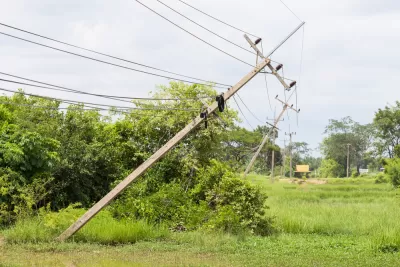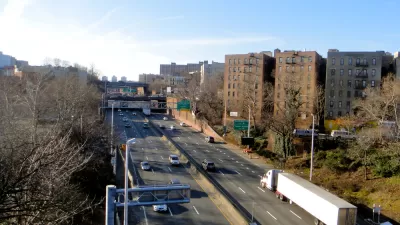The challenges of bridging the digital divide are exacerbated by the racist legacies of previous infrastructure systems, according to a recent presentation to the New York Regional Plan Association.

Emily Thenhaus shares a dispatch from the 2016 Regional Plan Association Assembly—specifically from a session about bridging the gap in digital access in the New York region.
Among the presenters during the session was New York City Counsel to the Mayor Maya Wiley, who highlighted the systematic roots of the digital divide. According to Wiley, the broadband system is being built on top of a deliberately discriminatory phone system. The following is taken directly from Wiley's presentation:
When I was in the U.S. Attorney’s office, when the Telecommunications Act of 1996 was being debated, actually civil rights groups including the NAACP, including La Raza were already working on the fact that the telephone system itself had actually redlined communities of color and that everyone understood the infrastructure was going to follow a lot of that proprietary infrastructure that was telephone lines to go to a more advanced form of technology that was going to get us to broadband.
So literally, without necessarily having racial intent to discriminate, because we are building on top of a discriminatory infrastructure, we are reinforcing over and over again that discrimination that happened decades before.
Thenhaus's article includes a full audio recording of the panel, which included BetaNYC Executive Director Noel Hidalgo, Newark Chief Information Officer Seth Wainer, Counsel to the Mayor or New York City Maya Wiley, and Knight Foundation Director of Community and National Strategy Benjamin de la Peña as moderator.
FULL STORY: Wiley: ‘…We are building on top of a discriminatory infrastructure’

Alabama: Trump Terminates Settlements for Black Communities Harmed By Raw Sewage
Trump deemed the landmark civil rights agreement “illegal DEI and environmental justice policy.”

Planetizen Federal Action Tracker
A weekly monitor of how Trump’s orders and actions are impacting planners and planning in America.

The 120 Year Old Tiny Home Villages That Sheltered San Francisco’s Earthquake Refugees
More than a century ago, San Francisco mobilized to house thousands of residents displaced by the 1906 earthquake. Could their strategy offer a model for the present?

In Both Crashes and Crime, Public Transportation is Far Safer than Driving
Contrary to popular assumptions, public transportation has far lower crash and crime rates than automobile travel. For safer communities, improve and encourage transit travel.

Report: Zoning Reforms Should Complement Nashville’s Ambitious Transit Plan
Without reform, restrictive zoning codes will limit the impact of the city’s planned transit expansion and could exclude some of the residents who depend on transit the most.

Judge Orders Release of Frozen IRA, IIJA Funding
The decision is a victory for environmental groups who charged that freezing funds for critical infrastructure and disaster response programs caused “real and irreparable harm” to communities.
Urban Design for Planners 1: Software Tools
This six-course series explores essential urban design concepts using open source software and equips planners with the tools they need to participate fully in the urban design process.
Planning for Universal Design
Learn the tools for implementing Universal Design in planning regulations.
Clanton & Associates, Inc.
Jessamine County Fiscal Court
Institute for Housing and Urban Development Studies (IHS)
City of Grandview
Harvard GSD Executive Education
Toledo-Lucas County Plan Commissions
Salt Lake City
NYU Wagner Graduate School of Public Service





























